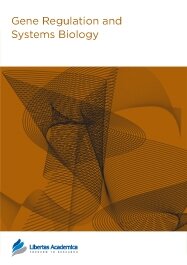

Publication Date: 22 Sep 2008
Journal: Gene Regulation and Systems Biology

Department of Physiology, Yong Loo Lin School of Medicine, National University of Singapore, Singapore.
Abstract
Antisense oligonucleotides (As-ODNs) are single stranded, synthetically prepared strands of deoxynucleotide sequences, usually 18–21 nucleotides in length, complementary to the mRNA sequence of the target gene. As-ODNs are able to selectively bind cognate mRNA sequences by sequence-specific hybridization. This results in cleavage or disablement of the mRNA and, thus, inhibits the expression of the target gene. The specificity of the As approach is based on the probability that, in the human genome, any sequence longer than a minimal number of nucleotides (nt), 13 for RNA and 17 for DNA, normally occurs only once. The potential applications of As-ODNs are numerous because mRNA is ubiquitous and is more accessible to manipulation than DNA. With the publication of the human genome sequence, it has become theoretically possible to inhibit mRNA of almost any gene by As-ODNs, in order to get a better understanding of gene function, investigate its role in disease pathology and to study novel therapeutic targets for the diseases caused by dysregulated gene expression. The conceptual simplicity, the availability of gene sequence information from the human genome, the inexpensive availability of synthetic oligonucleotides and the possibility of rational drug design makes As-ODNs powerful tools for target identification, validation and therapeutic intervention. In this review we discuss the latest developments in antisense oligonucleotide design, delivery, pharmacokinetics and potential side effects, as well as its uses in target identification and validation, and finally focus on the current developments of antisense oligonucleotides in therapeutic intervention in various diseases.
PDF (336.92 KB PDF FORMAT)
RIS citation (ENDNOTE, REFERENCE MANAGER, PROCITE, REFWORKS)
BibTex citation (BIBDESK, LATEX)
XML
PMC HTML
The reviewing and editorial management of our paper was timely, thorough, and systematic. In particular the reviewers' comments resulted in a paper significantly more robust than the first version.

All authors are surveyed after their articles are published. Authors are asked to rate their experience in a variety of areas, and their responses help us to monitor our performance. Presented here are their responses in some key areas. No 'poor' or 'very poor' responses were received; these are represented in the 'other' category.See Our Results
Copyright © 2013 Libertas Academica Ltd (except open access articles and accompanying metadata and supplementary files.)
FacebookGoogle+Twitter
PinterestTumblrYouTube